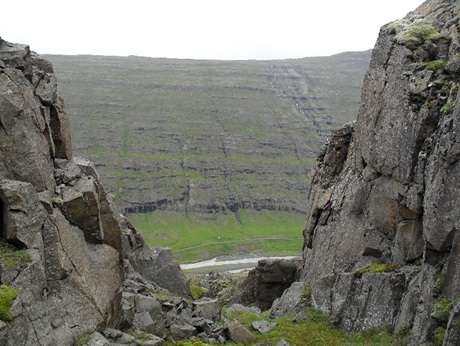Satellite observations of the geomagnetic field show that it is dominated by a strong dipolar component, which is highly dynamic, changing in both direction and intensity. These temporal changes, known as geomagnetic secular variation, are thought to reflect changes in fluid processes in the Earth’s core. A fundamental assumption of paleomagnetism is that when observed over geological timescales the secular variation is averaged out, and the time-averaged field becomes a geocentric axial dipole field (GAD). Together with colleagues at Imp. Coll. Lond., Univ. of Oxford and the Faroes Geol. Surv., we map these geomagnetic variations on 0-10 Ma time-scales by extracting reliable directional and intensity behavior from Icelandic basaltic rocks. For more information, see
GAD.

Picture of Plio-Pleistocene lavas in Fljotsdalur, NE Iceland